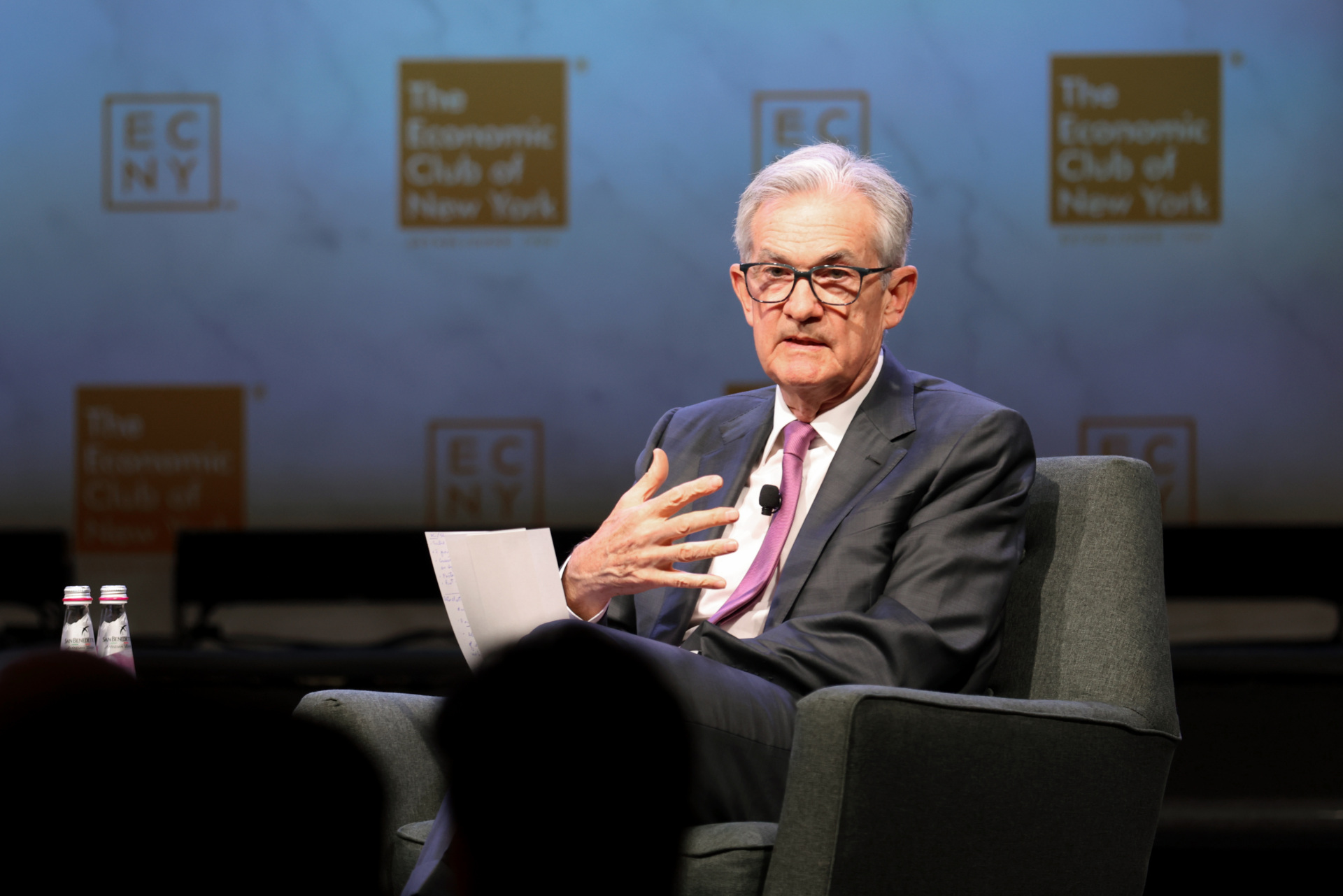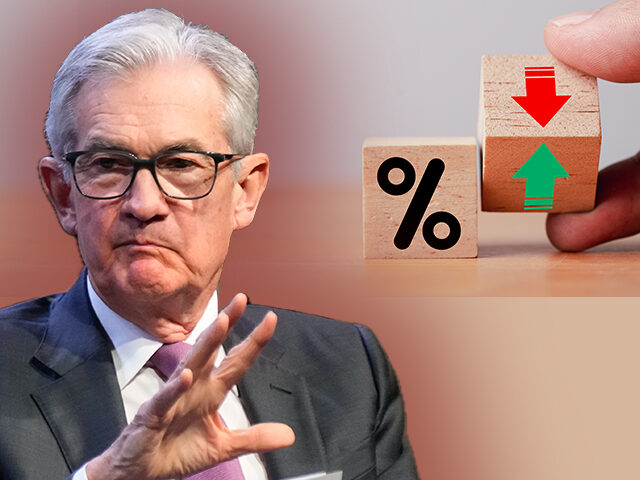Powell Exorcises the Ghost of an All Saints Day Hike
Jerome Powell just announced that the last hike is in—at least for now.
The market was already convinced the Federal Reserve was not going to raise its benchmark interest rate target at at the Federal Open Markets Committee (FOMC) meeting on November 1. The once-widely held belief that the Fed would raise every other meeting had given way in recent weeks to the idea that the Fed had become “patient” when it comes to further tightening.
If Powell thought there was a good chance that the market was overconfident in this view, his talk at the Economic Club of New York on Thursday was his chance to provide some corrective caution. Instead, Powell offered nothing but reassurance that the market had correctly sussed out the Fed’s plan.

Federal Reserve Chairman Jerome Powell during an interview at an Economic Club of New York event in New York City on Thursday, Oct. 19, 2023. (Bess Adler/Bloomberg via Getty Images)
“Given the uncertainties and risks, and how far we have come, the Committee is proceeding carefully,” Powell said in his prepared remarks.
That’s Fed speak for “we’re sitting the next one out.”
As we pointed out on Wednesday, there’s almost nothing on the economic calendar over the next 13 days that could plausibly change the minds of Fed officials that a Fed hike is needed. Even if gross domestic product growth for the third quarter comes in far above a sustainable pace, this will not surprise Fed officials who are very aware that the Atlanta Fed’s GDPNow has been seeing evidence for five percent growth and that all the Wall Street banks have been scrambling to raise their forecasts.
So, it’s safe to say that with Powell’s blessing, the ghost of a Hallow-mas hike has shuffled off to its final rest.
The Fed Is Likely Done For the Year
Powell’s remarks also gave plenty of reason to think that the Fed may be done with hiking for the foreseeable future, meaning the Fed will not hike at the December meeting either.
“Turning to monetary policy, the FOMC has tightened policy substantially over the past 18 months, increasing the federal funds rate by 525 basis points at a historically fast pace and decreasing our securities holdings by roughly $1 trillion,” Powell said. “The stance of policy is restrictive, meaning that tight policy is putting downward pressure on economic activity and inflation.”
The view that the stance of monetary policy is restrictive strikes us as highly questionable given the strength of economic growth this year, especially the fact that the economy appears to have gained momentum as the year went on. While it is true that inflation has come down a lot since last year’s epic eruptions of price instability, in recent months that progress has stalled.
Powell, however, regards the notion that the Fed’s stance is restrictive as unquestionably true. We think this makes it far less likely that he will favor more Fed hikes absent several months of evidence showing inflation is once again on the rise.
Perhaps even more importantly, Powell reiterated his view that the Fed’s earlier tightening will continue to work its way through the economy.
“Given the fast pace of the tightening, there may still be meaningful tightening in the pipeline,” Powell said.
In other words, the Fed doesn’t need to raise rates for the stance of monetary policy to keep squeezing out inflation. The economy is still playing catch-up with the past rate hikes.
Just as there’s little data that will emerge in the next thirteen days that can reasonably be expected to change the Fed’s mind about hiking at the October 31-November 1 meeting, another month and half of data will not likely change much. We will have two more employment reports and two more consumer price index reports by the final meeting of the year on December 12-13, which will not likely be enough to change the Fed’s mind about the stance of monetary policy or whether there’s more tightening in the pipeline.
Take the consumer price index (CPI). The Cleveland Fed’s nowcast for inflation is foreseeing just 0.15 percent for headline CPI in October, a big step down from 0.4 percent in September. Core CPI is seen as rising 0.34 percent, which would round down to the same 0.3 percent reading produced for August and September. While we find the lack of progress on inflation disturbing, the Fed will probably look at it as just more evidence of the idea that the effects of past hikes come with long and variable lags.
No Comfort for the Three Percenters
The most bullish part of Powell’s remarks came in the form of an insistence that the Fed was not going to give up on its two percent inflation target. The idea that the Fed should have a higher target has become very fashionable in elite economic circles but seems to have no purchase at the Fed.
“My colleagues and I are committed to achieving a stance of policy that is sufficiently restrictive to bring inflation sustainably down to 2 percent over time, and to keeping policy restrictive until we are confident that inflation is on a path to that objective,” Powell said.
And just a few moments later he said it again: “My colleagues and I remain resolute in our commitment to returning inflation to 2 percent over time.”
This could lead the Fed into the position of having to restart hikes next year if inflation proves stickier than Powell expects. At some point, if the recent stalling of disinflation continues and the economy continues to perform above what the Fed sees as its longterm trend, the Fed will be forced to confront the idea that the pipeline is empty and more hikes are needed.

COMMENTS
Please let us know if you're having issues with commenting.